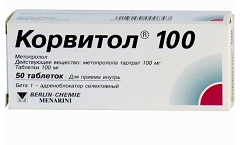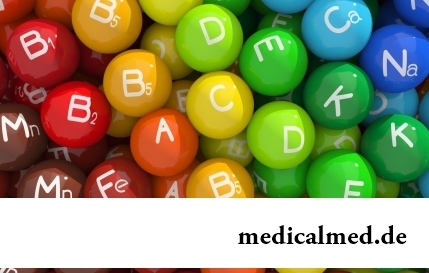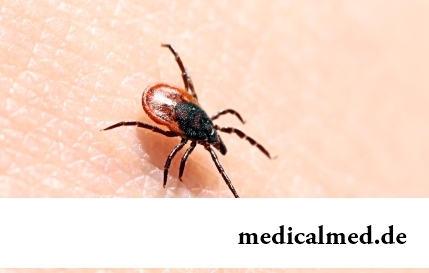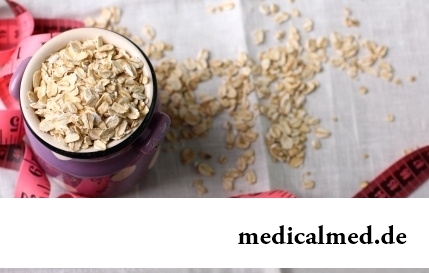





Corvitolum
Application instruction:
 Corvitolum – medicine with antiarrhytmic, anti-anginal and hypotensive action.
Corvitolum – medicine with antiarrhytmic, anti-anginal and hypotensive action.
Form of release and structure
Corvitolum is released in the form of tablets: ploskotsilindrichesky, white, round, with a facet and risky on the one hand (in blisters on 10 pieces, on 3, 5 or 10 blisters in a cardboard pack).
Is a part of 1 tablet:
- Active ingredient: a metoprolola tartrate – 50 mg (Corvitolum 50) or 100 mg (Corvitolum 100);
- Auxiliary components: monohydrate of lactose – 110,5/221 mg, K30 povidone – 3,5/7 mg, croscarmellose sodium – 8/16 mg, magnesium stearate – 2/4 mg, talc – 2,5/5 mg, colloid silicon dioxide – 1/2 mg.
Indications to use
- Arterial hypertension, including hyperkinetic type (along with other anti-hypertensive drugs or as monotherapy);
- Disturbances of a heart rhythm, including ventricular premature ventricular contraction and supraventricular tachycardia;
- Coronary heart disease (for prevention of attacks of stenocardia, secondary prevention of a myocardial infarction);
- Tachycardia;
- Attacks of migraine (prevention).
Contraindications
- Cardiogenic shock;
- Sinuatrial blockade;
- AV blockade of II and III degrees;
- The expressed bradycardia (at heart rate less than 50 beats per minute);
- Sick sinus syndrome;
- Dekompensirovanny heart failure;
- Disturbances of peripheric circulation (at a heavy current);
- Printsmetal's stenocardia;
- Arterial hypotension (at use for secondary prevention of a myocardial infarction – systolic pressure is less than 100 mm hg);
- Acute myocardial infarction (at the heart rate less than 45 beats per minute, PQ interval – it is more than 0,25 seconds, systolic pressure – it is less than 100 mm hg);
- Simultaneous use with monoamine oxidase inhibitors or verapamil (at intravenous administration);
- Lactation period;
- Age up to 18 years (safety and efficiency of performing therapy at this group of patients are not established);
- Hypersensitivity to drug components, and also to other beta adrenoblockers.
Patients need to apply Corvitolum with care with a diabetes mellitus, a metabolic acidosis, bronchial asthma, a chronic obstructive pulmonary disease (emphysema of lungs, chronic obstructive bronchitis), obliterating diseases of peripheral vessels (the alternating lameness, Reynaud's syndrome), a chronic renal and/or liver failure, a myasthenia, a pheochromocytoma, AV blockade of the I degree, a thyrotoxicosis, a depression (including in the anamnesis), psoriasis, and also to patients of advanced age.
Pregnant women can accept Corvitolum only according to strict indications, considering a ratio of advantage and risk (because of development in a fruit of arterial hypotension, bradycardia and a hypoglycemia). At the same time it is necessary to make careful observation, in particular behind fetation. Up to 2-3 days after delivery strict observation of a condition of the newborn is necessary.
Route of administration and dosage
Corvitolum should be accepted inside, after food. Tablets need to be swallowed, without chewing and to wash down with a small amount of liquid. In need of them it is possible to divide in half.
At frequency rate of use of Corvitolum once a day, it it is necessary to accept in the morning, 2 times a day – in morning and evening.
The mode of dosing is defined by indications:
- Arterial hypertension, stenocardia: 100 mg a day in 1 or 2 receptions. Increase in a daily dose to maximum – 200 mg is in case of need possible;
- The functional cardiac disturbances which are followed by tachycardia: 50-100 mg a day in 1-2 receptions. Increase in a daily dose to maximum – 200 mg in 2 receptions is in case of need possible;
- Attacks of migraine (prevention): 100 mg a day in 1 or 2 receptions. After achievement of therapeutic effect the dose under control of the doctor needs to be lowered.
Correction of the mode of dosing for elderly patients with functional disturbances of kidneys, and also in need of carrying out a hemodialysis is not required.
At functional disturbances of a liver the dose of Corvitolum should be reduced depending on a clinical state.
The course of use of drug in time is not limited, its duration is defined by features of disease.
Side effects
During use of Corvitolum the following side effects can develop:
- Central nervous system: weakness, fatigue, delay of speed of motor and mental reactions, a headache, dizziness, paresthesias in extremities (at patients with Reynaud's syndrome and the alternating lameness), a depression, concern, muscular weakness, decrease in attention, drowsiness, "dreadful" dreams, sleeplessness, an asthenic syndrome, short-term disturbance of memory or confusion of consciousness;
- Cardiovascular system: heartbeat, a sinus bradycardia, the expressed lowering of arterial pressure, orthostatic hypotension (in the form of dizziness, sometimes losses of consciousness); seldom – arrhythmias, decrease in contractility of a myocardium, temporary aggravation of symptoms of chronic heart failure (in the form of hypostases, puffiness of the lower part of shins and/or feet, an asthma), manifestation of a vasomotor spasm (in the form of strengthening of disturbances of peripheric circulation, Reynaud's syndrome, a cold snap of the lower extremities), a cardialgia, disturbances of conductivity of a myocardium;
- System of a hemopoiesis: seldom – thrombocytopenia (hemorrhages and unusual bleedings), a leukopenia, an agranulocytosis;
- Alimentary system: dryness in a mouth, nausea, an abdominal pain, vomiting, diarrhea, a lock, increase in activity of liver enzymes, taste change; extremely seldom – a hyperbilirubinemia;
- Endocrine system: a hypoglycemia (at the patients receiving insulin); seldom – a hypothyroid state, a hyperglycemia (at a non-insulin-dependent diabetes mellitus);
- Respiratory system: a nose congestion, an asthma, difficulty of an exhalation (because of a bronchospasm);
- Sense bodys: seldom – decrease in secretion of the lacrimal liquid and sight, morbidity and a xerophthalmus, a sonitus, conjunctivitis, rhinitis;
- Allergic reactions: skin itch, small tortoiseshell, rash;
- Dermatological reactions: dermahemia, reversible alopecia, aggravation of a course of psoriasis, psoriazopodobny skin reactions, photodermatosis, sweating strengthening, dieback;
- Others: joint pain or to back; in isolated cases – decrease in a potentiality and/or libido, insignificant increase in weight.
Special instructions
During use of Corvitolum it is necessary regularly (1 time in 4-5 months) to control the heart rate and arterial pressure, and also content of glucose in blood at patients with a diabetes mellitus. In case of need the dose of insulin or the hypoglycemic means accepted inside a sick diabetes mellitus needs to be picked up individually.
Elderly patients are regularly recommended to control functions of a liver, the patient with a heavy renal failure – functions of kidneys.
At reduction of heart rate to less than 50 beats per minute it is necessary to consult with the doctor.
It is necessary to consider that cardioselectivity decreases at reception of a dose more than 200 mg a day.
Reception of Corvitolum at heart failure can be begun only after achievement of a stage of compensation.
During therapy perhaps:
- Strengthening of expressiveness of reactions of hypersensitivity (at the burdened allergological anamnesis) and lack of effect at introduction of usual doses of adrenaline (Epinephrinum);
- Development of a photosensitization (it is recommended to wear the corresponding clothes);
- Reduction of products of the lacrimal liquid (it is necessary to consider the patient using contact lenses);
- Strengthening of signs of disturbances of peripheric arterial circulation.
Cancellation of Corvitolum needs to be carried out gradually, reducing a daily dose for 10 days. At the sharp termination of treatment development of the withdrawal which is shown in the form of strengthening of attacks of stenocardia and increase in arterial pressure is possible (the special attention is required by the patient with stenocardia).
At an angina of exertion the dose of Corvitolum is selected so that therapy at rest provided heart rate in borders of 55-60 beats per minute, at loading – to 110 beats per minute.
Drug can mask some symptoms of a thyrotoxicosis (for example, tachycardia). Sharp cancellation of therapy by the patient with a thyrotoxicosis is contraindicated as it can strengthen symptomatology.
Reception of Corvitolum at a diabetes mellitus can mask the tachycardia caused by a hypoglycemia.
In need of purpose of drug the patient with a pheochromocytoma as the accompanying treatment is appointed by alpha adrenoblockers; with bronchial asthma – beta2-adrenostimulyator.
Before carrying out surgical intervention of the anesthesiologist it is necessary to warn about the carried-out treatment (for the general anesthesia it is necessary to choose drugs with the smallest negative inotropic effect), cancellation of Corvitolum at the same time is not recommended.
At a concomitant use with a clonidine, it can be cancelled only in several days after the termination of reception of Corvitolum.
The drugs lowering stocks of catecholamines (for example, Reserpinum), can strengthen effect of beta adrenoblockers therefore the patients accepting such combinations of drugs need constant medical observation regarding detection of bradycardia and excessive reduction of arterial pressure.
Correction of the mode of dosing of Corvitolum (sometimes its cancellation) is required only at emergence in elderly patients of the accruing bradycardia (to 50 beats per minute), ventricular arrhythmias, the expressed lowering of arterial pressure (systolic pressure is lower than 100 mm of mercury.), bronchospasm, AV blockade, heavy functional disturbances of a liver.
Special control of a state is required to the patients accepting Corvitolum with a depression. At development of the depression connected with administration of drug, therapy is recommended to be interrupted.
During use of Corvitolum it is recommended to refuse control of motor transport and performance of potentially dangerous types of the works demanding the increased concentration of attention and bystry psychomotor reactions.
Medicinal interaction
At combined use of Corvitolum with some drugs the following undesirable effects can develop:
- Monoamine oxidase inhibitors: significant strengthening of hypotensive action (the break between administrations of drugs has to make not less than 14 days);
- Nifedipine: significant lowering of arterial pressure;
- Verapamil (intravenous administration): development of a cardiac standstill is possible;
- Means for an inhalation anesthesia (derivatives of hydrocarbons): increase in risk of development of arterial hypotension and oppression of function of a myocardium;
- Ethanol: strengthening of the oppressing impact on the central nervous system and increase in risk of the expressed lowering of arterial pressure;
- Beta адреностимуляторы, cocaine, theophylline, estrogen, indometacin and other non-steroidal anti-inflammatory drugs: easing of hypotensive effect;
- Anesthetics: summation of cardiodepressive effect;
- Ergot alkaloids: increase in risk of disturbances of peripheric circulation;
- Barbiturates, rifampicin (inductors of microsomal enzymes of a liver): strengthening of metabolism of a metoprolol, decrease in its concentration in a blood plasma and effect;
- Insulin: increase in risk of development of a hypoglycemia, strengthening of its expressiveness, masking of some signs of a hypoglycemia (including tachycardia, perspiration, increase in arterial pressure);
- The hypoglycemic means accepted inside: decrease in their effect;
- Hypotensive drugs, diuretics, nitroglycerine, blockers of slow calcium channels: sharp lowering of arterial pressure (extra care needs to be observed at a combination to Prazozinum);
- Verapamil, diltiazem, Reserpinum, antiarrhytmic drugs (Amiodaronum), alpha Methyldopum, a clonidine, гуанфацин, means for the general anesthesia and cardiac glycosides: oppression of AV conductivity and urezheniye of heart rate;
- Clonidine (at cancellation): risk of emergence of a withdrawal (the clonidine should be cancelled in several days);
- Oral contraceptives, Cimetidinum, fenotiazina (inhibitors of microsomal enzymes of a liver): increase in concentration of a metoprolol in a blood plasma;
- Lidocaine, xanthines (except Diphyllinum): decrease in its clearance;
- The allergens applied to an immunotherapy or the extracts of allergens used for conducting skin tests: increase in risk of development of an anaphylaxis or system allergic reactions;
- Iodinated radiopaque substances (intravenous administration): increase in risk of development of anaphylactic reactions;
- Lidocaine: increase in its concentration in a blood plasma;
- The anti-depolarizing muscle relaxants: strengthening and prolongation of their action;
- Coumarins: lengthening of anticoagulating effect.
Terms and storage conditions
To store in the place, unavailable to children, at a temperature up to 30 °C.
Period of validity – 3 years.
If to smile all twice a day – it is possible to lower blood pressure and to reduce risk of developing of heart attacks and strokes.

Food with the increased content of sugar is attractive to most of people - it is scientifically confirmed fact. Business here not in a nevozder...
Section: Articles about health
Vitamin complexes belong to the most popular drugs, probably, in our country there is no person who was not hearing about advantage of vitamins and never their accepting. The more vitamins, the better, we consider and as it appeared, cruelly we are mistaken. So l...
Section: Articles about health
Diapers for adults – individual one-time means of hygiene which in some situations is irreplaceable and from such situations any person is not insured. Though nobody perceives need of their use with enthusiasm, however without such means already problematic situation could be heavier....
Section: Articles about health
All of us, unfortunately, should face flu nearly an every year. It would seem, so frequent disease has to be study...
Section: Articles about health
Scientists have no unambiguous opinion on a proximate cause of emergence of a carcinoma cutaneum today. Only the factors promoting development of this illness are precisely established. Treat them: long impact on skin of ultraviolet rays, radioactive...
Section: Articles about health
Doctors claim that the people not so familiar with a dorsodynia occur among adult Russians very seldom. At the same time the vast majority of the patients who are periodically testing this indisposition do not hurry to ask for medical care at all. On the one hand, there is an opinion that feelings of this sort at mature age are nearly natural phenomenon which is not doing serious harm to health. With another – practice of self-treatment various obezbol is eurysynusic...
Section: Articles about health
Climax - process of fading of reproductive function of an organism in process of its aging. At women the main sign of its approach showing...
Section: Articles about health
For most of the working people the problem of having a snack is particularly acute enough. Sooner or later there is a question: what can be eaten quickly between a breakfast and a lunch or a lunch and leaving from service so that to receive necessary power feed, but not an overload...
Section: Articles about health
About influence of fasting days on an organism it is told much – both about advantages, and about shortcomings. It is considered that fasting day in the form of a short-term monodiet is useful, promoting effective removal of slags from an organism whereas irregular, excessively long, spontaneous fasting days lead only to deterioration in health. How to derive benefit from the sparing diet and not to do much harm to itself? Let's consider the main advantages and shortcomings of fasting days and their influence on an org...
Section: Articles about health
The number of long-livers is very small. One person from 5 thousand lives up to age of 90 years, and the centenary boundary steps only about...
Section: Articles about health
Tick-borne encephalitis – one of the most dangerous viral diseases which causative agents transfer and is given to people by ixodic mites. These are the small blood-sicking insects living in the considerable territory of our country. The person bitten by a tick can catch...
Section: Articles about health
Statistically, in Russia about 34% of citizens smoke. Most of consumers of tobacco has problems with health sooner or later. Not only smokers, but also their relatives suffer. Besides, cigarettes are expensive, and need of their acquisition goes a heavy burden on the budget of thousands of Russian families. Many people dream to refuse harmful tendency, but everyone manages to make it not: nicotine addiction is affectionate and to get rid of it not easy....
Section: Articles about health
Life of the modern child is extremely active and difficult. Information strain which is experienced by the school student and did not dream the pupil...
Section: Articles about health
Producers of milk mixes for children assure: mixes are ideally balanced and adapted for needs of babies. If mother should raise artificially the kid owing to serious problems with health, to do nothing – m substitutes...
Section: Articles about health
Today about 30 diseases, sexually transmitted are known. Wide circulation of these illnesses is extremely promoted by the dual attitude towards them: on the one hand, most of people know about "shameful" diseases very little and do not aim at receiving detailed and reliable information, considering that such problems personally will never concern them. With another – there are delusions about STD which instill unreasonable confidence that troubles such...
Section: Articles about health
The list of stereotypes of which, apparently, all know strongly includes following: British surely eat for breakfast овсянк...
Section: Articles about health
Tea is loved and use almost everything. This drink has tonic properties, contains the tannins capable to suppress activity of causative organisms. Recently great popularity was gained by teas with vegetable additives. Лечеб...
Section: Articles about health
Reactive pancreatitis - the disease which is characterized by inflammatory process in a pancreas which arises most often because of excess activity of digestive enzymes. It − the emergency state which treatment has to take place in surgical department under control of doctors. The acute inflammation of gland can become the reason of its transition to a chronic form, and also development is purulent - necrotic pancreatitis which the extensive necrosis of fabrics can follow. Zabolev...
Section: Articles about health
High temperature - a frequent symptom of such widespread diseases as a SARS, quinsy, pneumonia, etc. To reduce heat, облег...
Section: Articles about health
A little more than a century ago goat milk was a traditional food stuff of most of Russians. Unfortunately, today on tables of our compatriots it appears extremely seldom. The reason that the use of so useful product practically descended on...
Section: Articles about health
For the city dweller the fitness is the most convenient sport. It is enough to acquire the subscription to the gym to get access to various apparatuses and an opportunity to train under the leadership of the experienced consultant. Many consider fitness the best way of maintenance of physical shape and receiving dynamic loads which the people occupied preferential with brainwork so need. Nevertheless, representations of most of consumers of similar services about специф...
Section: Articles about health
The technique of acupuncture (acupuncture) is used in the medical purposes more than three and a half millennia. It widely races...
Section: Articles about health
Practically each person is familiar with the annoying, pulling, unscrewing pains caused by overcooling of muscles of a back. In certain cases inflammatory process is not limited to discomfort, being followed by emergence of hypostasis, consolidations, increase температ...
Section: Articles about health
Striya (extension) are the defects of skin having an appearance of direct or wavy strips from 1 to 10 cm long and 1-5 mm wide. In most cases at women of a striya are located on a stomach, hips, a breast or buttocks. At athletes they can appear on shoulders and the internal surface of forearms. At initial stages of development of an extension have red or lilac color, but over time their coloring turns pale, and strips become whitish, getting a nacreous shade....
Section: Articles about health
Memory is an ability of the central nervous system to fix, keep and as necessary to reproduce information on knowledge...
Section: Articles about health
Frosty air, fresh wind and easy snowball at most of Russians are associated with cheerfulness, health and cheerful entertainments on which our winter is so generous. But, unfortunately, cold season sometimes brings also troubles with health. It is not about a season...
Section: Articles about health
Feeding by a breast - the integral part of ideal motherhood allowing to come into contact with the kid and to create to it healthy immunity since early years. Nevertheless, this important process in life of mother and child can be saddened laktostazy − by a milk delay in a mammary gland. What main reasons for a laktostaz? How not to allow problems with breastfeeding? Let's consider 10 premises resulting in stagnation of milk at the nursing mother....
Section: Articles about health
